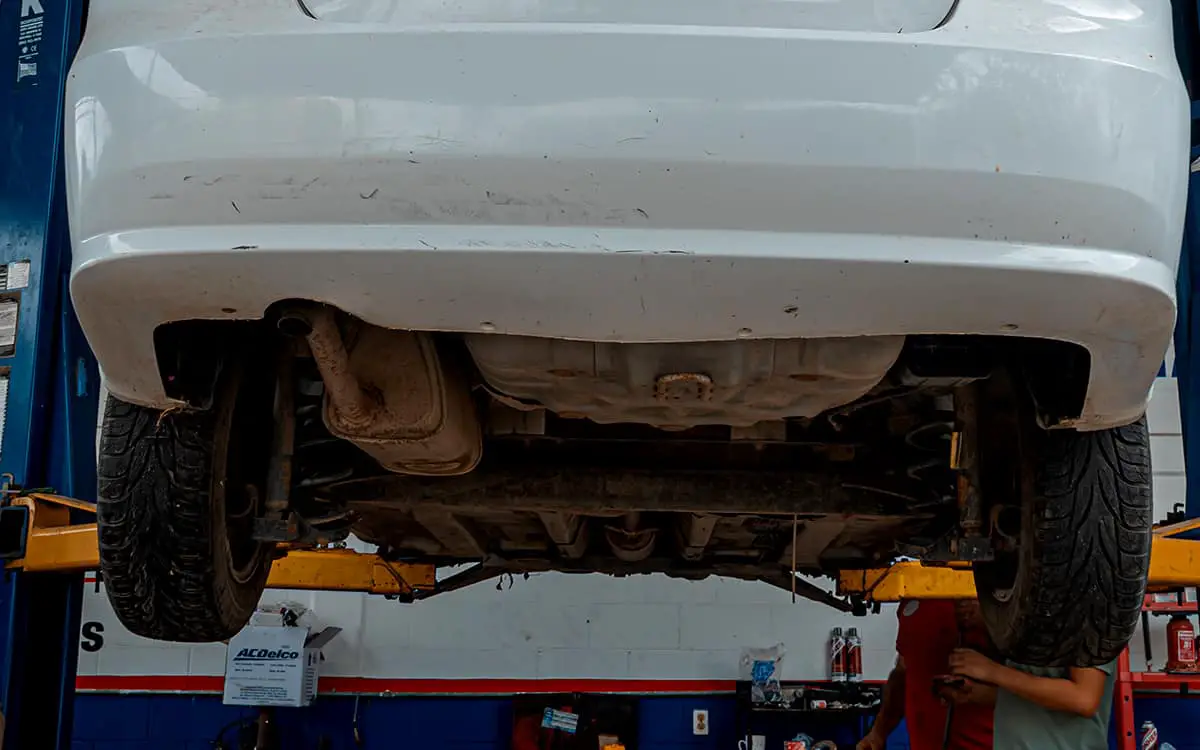If you’re like most people, you probably don’t know how to replace your tie rods. In fact, most people have no idea what a tie rod even is. But what if you could save money by doing the job yourself?
In this article, we will discuss the pros and cons of replacing your tie rods. We will also provide a step-by-step guide on how to do it yourself.
To address the question “Can I replace my tie rod?” The answer is yes, but it’s not as simple as replacing a tire. because a tie rod is part of the steering system, it’s important that the job is done correctly. Otherwise, you could end up with a car that is difficult to steer or worse. That being said, let’s take a look at the pros and cons of replacing your tie rod.
The first thing to consider is whether or not you have the necessary tools.
There are a few things you need to know before attempting this repair. Here are some pros and cons to consider before taking on the task:
Pros of replacing your tie rod:
The pros of replacing your tie rods by yourself is:
1. You can save money by doing it yourself
Replacing your own tie rod is a way to save money, since you don’t have to drive your car to a mechanic and pay for their services.
2. You can learn something new
Another benefit of replacing your own tie rod is that It is a great way to learn more about how your car works and get under the hood, so to speak. You get to learn more things about your car yourself than just paying for things to be fixed when there is a problem
3. You can do it at your own convenience
You don’t have to take time out of your schedule to bring your car into the shop and wait for the repairs. You can do it at night, on the weekend, or whenever you have some free time.
Cons of replacing your tie rod:
The cons of replacing your tie rods by yourself is:
1. Worsen the problem
If you don’t replace the tie rod correctly, you could make the problem worse, you might end up with a worse steering than before and it might be more dangerous and also more expensive to fix
2. It is a difficult task
Replacing your tie rod is not an easy task, and it takes some time to do it right. You need to have the right tools and knowledge to do it correctly, or you could make the problem worse and end up having to pay more to a mechanic to right your wrongs.
3. You might need special tools
To replace your tie rod, you might need some special tools that you might not have at home. If you don’t have the right tools, it will be difficult to do it correctly and can lead to major problems down the road.
Now that we’ve looked at the pros and cons of replacing your tie rods, let’s take a look at how to do it.
Reasons for tie rod replacement
There are several reasons why you might replace your tie rod, some examples are:
1. Leaking tie rod
The third reason to replace your tie rod is if it is leaking. If you notice fluid leaking from your tie rod, it should be replaced as soon as possible.
2. Worn out or damaged parts:
The tie rod is a very important part of the car and if it’s not working properly, it can be due to worn out or damaged parts. The gear may be broken, the connecting rod may be bent, or the housing may be cracked.
3. Oil or grease build-up:
If there is too much oil or grease build-up on the tie rod, it can cause the parts to stick and not work properly. This may be due to a faulty seal or gasket.
4. Rust:
Rust can also cause problems with the tire rod. If there is too much rust on the parts, it can cause them to stick or freeze up.
5. Icing:
Icing can also be a problem for the tie rod. If there is ice on the parts, it can cause them to stick and not work properly.
How to tell when a tie rod is bad
There are a few ways to tell when a tie rod is bad. Here are some of the most common symptoms:
1. Car pulling to one side
If your car is pulling to one side, it may be a sign that the tie rod is not working properly. This can be dangerous, as you may not be able to control the car in an emergency.
2. Car feels unstable or difficult to control
If your car feels unstable or difficult to control, it may be a sign that the tie rod is not working properly. This can be dangerous, as you may not be able to control the car in an emergency.
2. The steering wheel vibrates when braking or accelerating
If the steering wheel vibrates when braking or accelerating, it may be a sign that the tie rod is not working properly. A vibrating wheel means a probability to lose control of your steering wheel if not held firmly and can cause accidents.
3. Gear is hard to turn
If the gear on the tie rod is hard to turn, it may be a sign that the tie rod is not working properly. This can be dangerous, as you may not be able to control the car in an emergency.
4. The car starts to veer off course
If the car starts to veer off course, it may be a sign that the tie rod is not working properly. This can be dangerous because it means you have lost control and may cause accidents on the road.
How to replace tie rods (DIY)
If you’re still undecided about going to the mechanic, here’s a step-by-step guide on how to replace both your own inner and outer tie rod.
Before attempting this repair, make sure you have the following tools:
-Jack and jack stands
-Tie rod end wrench or adjustment sleeve wrench
-Hammer
-Pry bar
-Pliers
-Grease gun
-New tie rods
1. Remove the tire
The first step is to jack up your car and remove the front wheels. Once the wheels are removed, you’ll need to loosen the tie rod end jam nut with a wrench.
2. Remove the cotter pin
The next step to replace the tie rod is to remove the cotter pin to do this use a plie to straighten the cotter pin and pull it through onside and use a rachet to take the castle nut off.
3. Separate tie rod from the steering knuckle
Next, use a pry bar to separate the tie rod end from the steering knuckle. This can be done by prying on the tie rod until it pops out of the steering knuckle.
4. Remove old tie rod end
The next step is to remove the old tie rod end from the vehicle. This can be done by unscrewing it from the vehicle.
5. Install new tie rod end
After you have removed the old tie rod end, you will need to install the new tie rod end. This can be done by screwing it into the vehicle.
6. Reattach the tie rod to the steering knuckle
The next step is to reattach the tie rod to the steering knuckle. This can be done by lining up the holes and inserting the tie rod back into the steering knuckle.
7. Tighten the castle nut and cotter pin
The final step is to tighten the castle nut and cotter pin. Once you have tightened the castle nut, insert the cotter pin back into the hole and bend it over to secure it in place.
Final thought
Now that we’ve looked at how to replace your own tie rod, it’s up to you to decide whether or not you want to take on this repair. If you do decide to replace your own tie rod, make sure you have the right tools and knowledge before attempting the repair.
Otherwise, you could end up making the problem worse and costing yourself more money in the long run. If you’re not confident in your ability to replace the tie rod, we recommend taking it to a mechanic. They will be able to properly diagnose the problem and fix it without causing any further damage.`
We hoped this article was helpful in answering the question: can I replace my own tie rod? As always, if you have any further questions or concerns, feel free to reach out to us. We’re always happy to help!.

